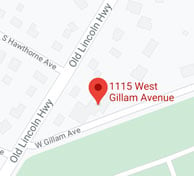Learn how to keep your heat pump running efficiently and effectively with these maintenance tips. Heat pumps are not only effective in keeping your home comfortable, but they can also save you money in the long run. By following proper maintenance tips you can ensure that your heat pump operates at peak efficiency. Investing in the care and maintenance of your heat pump not only extends its lifespan but also contributes to a more sustainable and eco-friendly home environment.
4 Tips To Minimize Strain On Your Heat Pump
1. Annual maintenance
To minimize strain on your heat pump, it is important to schedule annual maintenance. Regular maintenance by a professional HVAC technician can help identify and address any issues before they become major problems. This includes inspecting and cleaning the various components of the heat pump, checking for any leaks or refrigerant issues, and ensuring that all parts are functioning properly. By keeping up with annual maintenance, you can prolong the life of your heat pump and ensure it operates at peak efficiency.
2. Clean around the outdoor unit
Another way to minimize strain on your heat pump is to regularly clean around the outdoor unit. Over time, leaves, grass clippings, dirt, and debris can accumulate around the unit, obstructing airflow and reducing its efficiency. It is important to clear away any debris and maintain a clear space of at least two feet around the unit.
In addition to clearing away debris, it is also smart to keep the outdoor unit free from ice and snow during the winter months. Accumulated ice or snow can restrict airflow and strain the heat pump. If you notice ice or snow buildup, carefully remove it using a broom or a soft brush. Avoid using sharp objects or excessive force, as this can damage the unit.
3. Utilize programmable thermostats
Using programmable thermostats can help minimize strain on your heat pump by optimizing temperature settings throughout the day. Programmable thermostats allow you to set different temperature levels for different times of the day, so you can adjust the temperature based on when you are home or away.
For example, you can program the thermostat to lower the temperature during the hours when you are typically away from home, and then have it raise the temperature to a comfortable level before you return. This helps reduce the workload on your heat pump and can lead to energy savings. Additionally, some programmable thermostats have features that allow you to control the temperature remotely using a smartphone app.
4. Replace air filters
Regularly replacing the filters in your heat pump is essential for maintaining its efficiency and minimizing strain. Dirty or clogged filters can restrict airflow and cause the heat pump to work harder to circulate air. This not only puts strain on the system but also reduces its overall performance.
The frequency of filter replacements depends on various factors, including the type of filter and the amount of dust and allergens in your home. As a general rule, it is recommended to check the filters every month and replace them every 30- 60 days. However, if you have pets or suffer from allergies, you may need to replace the filters more frequently. Be sure to follow the manufacturer's instructions for the specific type of filter you are using.
Upgrade to a Heat Pump for Savings
If you are looking to minimize strain on your heat pump and save on energy costs, consider upgrading to a more energy-efficient model. Newer heat pump models are designed to be more efficient and environmentally friendly, which can lead to significant energy savings in the long run.
By upgrading to a heat pump with a higher SEER (Seasonal Energy Efficiency Ratio) rating, you can enjoy increased efficiency and lower energy consumption. Additionally, newer models often come with advanced features, such as variable-speed compressors and smart thermostats, which further optimize performance and energy usage.
While the upfront cost of upgrading to a new heat pump may seem high, the long-term energy savings and improved performance can make it a worthwhile investment. There are many options to save thousands of dollars while installing a new heat pump system through the IRA, PECO, and discounts ECI is running right now.
Conclusion
In conclusion, maintaining the efficiency and effectiveness of your heat pump is crucial for ensuring optimal performance and energy savings in the long run. By scheduling annual maintenance, cleaning around the outdoor unit, utilizing programmable thermostats, regularly replacing filters, and considering an upgrade to a more energy-efficient model, you can minimize strain on your heat pump and enjoy a comfortable indoor environment while reducing energy costs. Taking proactive steps to care for your heat pump will not only extend its lifespan but also contribute to a more sustainable and eco-friendly home. Remember, consulting with a professional HVAC technician can help you make informed decisions about the maintenance and potential upgrades for your heat pump.
If you live in the Delaware Valley/Greater Philadelphia area and would like to find comfort within your home, visit our website or give us a call at 215 - 245 - 3200 to learn more.









